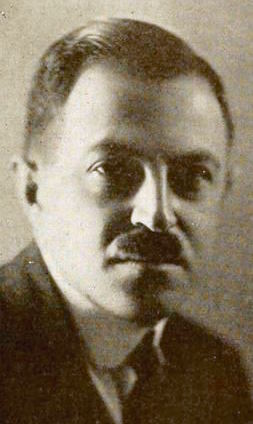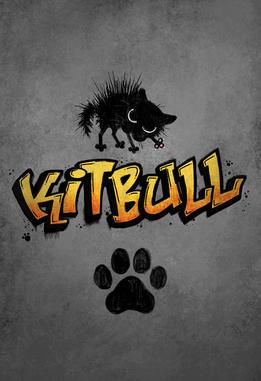Related Research Articles

Walter Elias Disney was an American animator, film producer, voice actor, and entrepreneur. A pioneer of the American animation industry, he introduced several developments in the production of cartoons. As a film producer, he holds the record for most Academy Awards earned and nominations by an individual. He was presented with two Golden Globe Special Achievement Awards and an Emmy Award, among other honors. Several of his films are included in the National Film Registry by the Library of Congress and have also been named as some of the greatest films ever by the American Film Institute.

Oswald the Lucky Rabbit is an animated cartoon character created in 1927 by Walt Disney and Ub Iwerks for Universal Pictures. He starred in several animated short films released to theaters from 1927 to 1938. Twenty-seven animated Oswald shorts were produced at the Walt Disney Studio. After Universal took control of Oswald's character in 1928, Disney created a new character similar in appearance to Oswald as a replacement: Mickey Mouse, who went on to become one of the most famous cartoon characters in the world.
Animation in the United States in the television era was a period in the history of American animation that gradually started in the late 1950s to 1960s with the decline of theatrical animated shorts and popularization of television animation, reached its peak during the 1970s to 1980s, and ended around the late 1980s. This era is characterized by low budgets, limited animation, an emphasis on television over the theater, and the general perception of cartoons being primarily for children.

Max Fleischer was a Polish-American animator and studio owner. Born in Kraków, Poland, Fleischer immigrated to the United States where he became a pioneer in the development of the animated cartoon and served as the head of Fleischer Studios, which he co-founded with his younger brother Dave. He brought such comic characters as Koko the Clown, Betty Boop, Popeye, and Superman to the movie screen, and was responsible for several technological innovations, including the rotoscope, the "follow the bouncing ball" technique pioneered in the Ko-Ko Song Car-Tunes films, and the "stereoptical process". Film director Richard Fleischer was his son.
Hugh Harman and Rudolf Ising were an American animation team and company known for founding the Warner Bros. and Metro-Goldwyn-Mayer animation studios. In 1929, the studio was founded under the name Harman-Ising Productions, producing Looney Tunes and Merrie Melodies for Leon Schlesinger from 1930 to 1933. From 1934 to 1938, Harman-Ising produced the Happy Harmonies series, with William Hanna as their employee.
Blue Sky Studios, Inc. was an American visual effects and computer animation studio based in Greenwich, Connecticut. It was founded on February 22, 1987, by Chris Wedge, Michael Ferraro, Carl Ludwig, Alison Brown, David Brown, and Eugene Troubetzkoy after their employer, MAGI, one of the visual effects studios behind Tron, shut down. Using its in-house rendering software, the studio created visual effects for commercials and films before dedicating itself to animated film production. It produced 13 feature films, the first being Ice Age, released in 2002 by 20th Century Fox, and the final one being Spies in Disguise, released in 2019.
Digital puppetry is the manipulation and performance of digitally animated 2D or 3D figures and objects in a virtual environment that are rendered in real-time by computers. It is most commonly used in filmmaking and television production but has also been used in interactive theme park attractions and live theatre.

The Mouse Factory is an American syndicated television series produced by Walt Disney Productions and created by Ward Kimball, that ran from 1972 to 1973. It showed clips from various Disney cartoons and movies, hosted by celebrity guests, including Charles Nelson Reilly, JoAnne Worley, Wally Cox, Johnny Brown, Phyllis Diller, Joe Flynn, Annette Funicello, Shari Lewis and Hush Puppy, Lamb Chop, Dom DeLuise, Don Knotts and many more visiting the Mouse Factory and interacting with the walk-around Disney characters from the Disney theme parks. The series was later rerun on the Disney Channel in the 1980s and 1990s.
WildBrain Ltd. is a Canadian media, animation studio, production, and brand licensing company, mostly associated as an entertainment company. The company is known for owning the largest independent library of children's television programming, including the assets of acquisitions such as Cookie Jar Group, Epitome Pictures, and Wildbrain Entertainment among others, distribution rights to the Jay Ward Productions library, and a stake in the Peanuts franchise.
The animated documentary is a moving image form that combines animation and documentary. This form should not be confused with documentaries about movie and TV animation history that feature excerpts.
Powerhouse Animation Studios, Inc. is an American animation studio based in Austin, Texas. It was founded in April 2001 with a subsidiary called Powerhouse Animation LLC, established in the summer of 2014. The company develops and produces traditional 2D animation, motion comics, motion graphics, art assets, digital paint, illustration for television series, motion pictures, video game cinemas, commercials, advertising campaigns, educational properties, and entertainment companies.
Fit To Be You was a short-lived live-action educational series originally produced in the early 1980s by Walt Disney Educational that taught children about fitness.
Fitness and Me is an educational series of three short films produced in 1984 by Sun West Production Inc. for Walt Disney Educational to explain fitness. The series combined live-action and animation. The animation was outsourced to Pantomime Pictures.
What Should I Do? is a short-lived educational series focusing on moral topics originally produced in animation during the late 1960s and early 1970s by The Walt Disney Company's educational media division. Additional live-action entries were produced in 1992. What Should I Do? films were featured in some episodes of Donald Duck Presents.
Upjohn was a pharmaceutical firm.
Community reinforcement approach and family training is a behavior therapy approach in psychotherapy for treating addiction developed by Robert J. Myers in the late 1970s. Meyers worked with Nathan Azrin in the early 1970s whilst he was developing his own community reinforcement approach (CRA) which uses operant conditioning techniques to assist those with addictions live healthily. Meyers adapted CRA to create CRAFT, which he described as CRA that "works through family members." CRAFT combines CRA with family training to equip concerned significant others (CSOs) of addicts with supportive techniques to encourage their loved ones to commence and continue treatment and provides them with defences against addiction's damaging effects on themselves.
Reason and Emotion is a propaganda short film by Walt Disney Productions, released on August 28, 1943, by RKO Radio Pictures. It was nominated for the Academy Award for Best Animated Short Film in the same year. The short film is eight minutes long.

Roger Rabbit is a fictional animated anthropomorphic rabbit. The character first appeared in author Gary K. Wolf's 1981 novel, Who Censored Roger Rabbit? In the book, Roger is second banana in a popular comic strip, "Baby Herman". Roger hires private detective Eddie Valiant to investigate why his employers, the DeGreasy Brothers, have reneged on their promise to give Roger his own strip. When Roger is found murdered in his home, Valiant sets out to look for the killer, with the help of Roger's "doppel".

Kitbull is a 2019 American traditionally animated short film and viral video directed and written by Rosana Sullivan, produced by Pixar Animation Studios, and distributed by Walt Disney Studios Motion Pictures. It is the third film in Pixar's SparkShorts program, and focuses on a fiercely independent stray kitten and an abused pit bull, who form an unlikely friendship. The short premiered at El Capitan Theatre on January 18, 2019, before being released on YouTube on February 18, 2019, and has received over 100 million views as of August 2023. The short was also released on Disney+ on November 12, 2019 and was later released in theaters on February 9, 2024 ahead of Turning Red.
References
- ↑ "Oddball Sixties Disney Industrial Films | Cartoon Brew: Leading the Animation Conversation". www.cartoonbrew.com. Archived from the original on 2009-04-03.